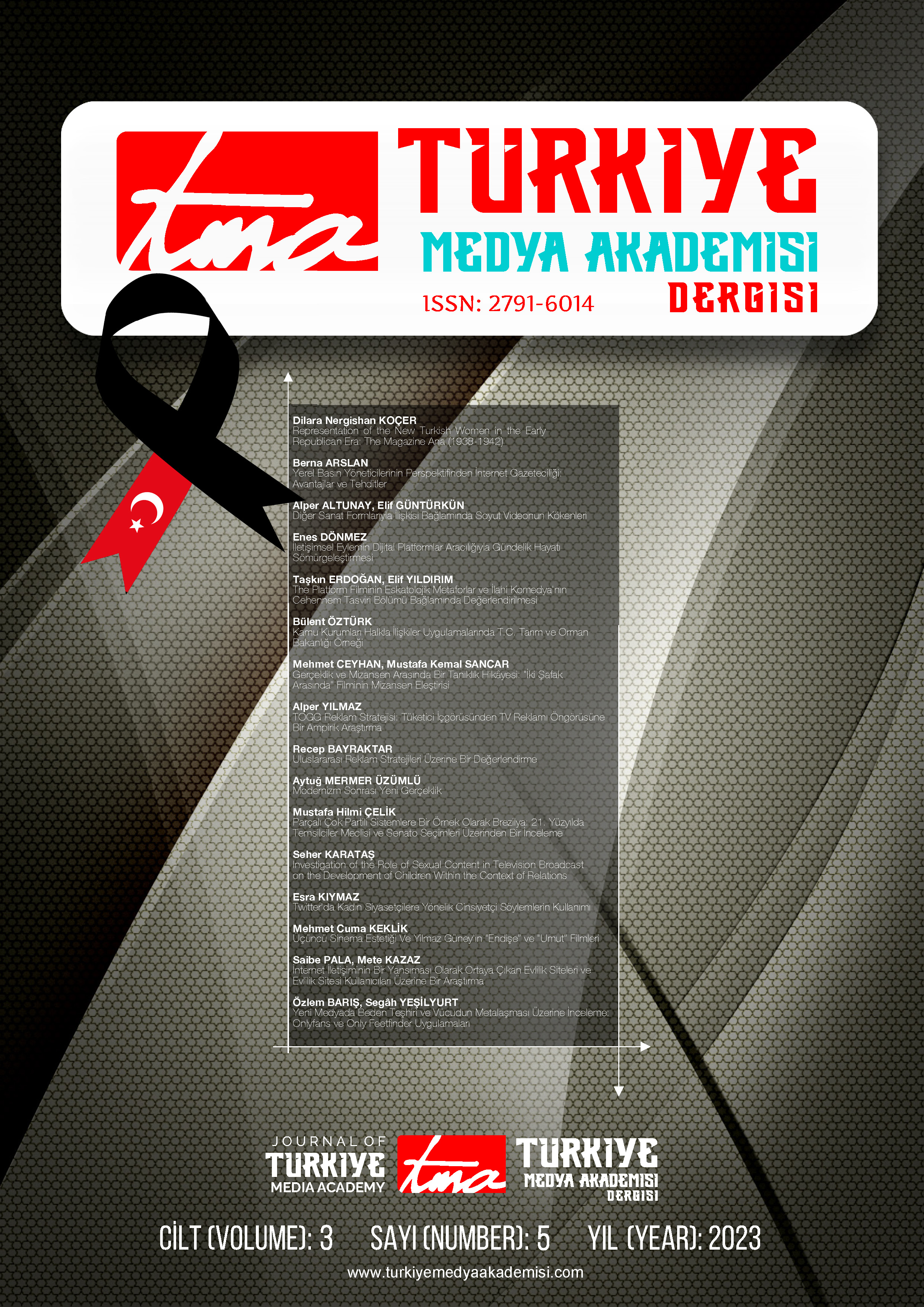A WITNESS STORY BETWEEN REALITY AND MISE EN SCENE: THE MISE EN SCENE CRITIQUE OF “BETWEEN TWO DAWNS”
DOI:
https://doi.org/10.5281/zenodo.7646805Keywords:
Mise En Scen, Reality, Between Two Dawns, Film CriticismAbstract
The formal features of a work of art are one of the most fundamental factors that also affect its content and reception. The art of cinema also owes its capacity for storytelling -compared to other forms of storytelling- to the sheer volume of its possibilities for form. Cinema art creators, who can process the stylistic features of many art branches from architecture to music, from painting to literature in their own form, also design formal preferences in their works that are suitable for the content and the reception of that content. In this study, it is aimed to reveal the importance of the director's formal preferences in the narrative by making a “mise en scene” critique of director Selman Nacar's film "Between Two Dawns" shot in 2021. The dialectical relationship between fiction and reality in Nacar's first feature film, which is discussed here, reflects the trend in Turkish cinema, especially after 2010. In this respect, after making a general evaluation of the relationship between cinema and reality, Turkish cinema's approach to reality is explained in a historical context. Here, it is underlined that although social realist tendencies are seen throughout the history of domestic cinema, the formal pursuits to approach reality in independent films shot after 2010 have become unique. In the film "Between Two Dawns", which was criticized for “mise en scene” in this study, a neutral camera positioning, the use of a long one and a plan-sequence; gives a formal exception to the said trend. Due to the preference of the “mise en scene” criticism method, the relationship between the “mise en scene” elements such as camera position, camera movement, framing, decor/space, lighting, acting, which reveals a “mise en scene”, and the relationship between them are also examined. When the findings are examined; In the film "Between Two Dawns", it has been observed that the director's preferences such as the use of actual camera, shot-sequence and long-shot preferences, positioning the camera from an objective point of view and natural lighting increase the effect of realism in the context of the film style.
Downloads
Published
How to Cite
Issue
Section
License
Copyright (c) 2023 Journal of Türkiye Media Academy

This work is licensed under a Creative Commons Attribution-ShareAlike 4.0 International License.


